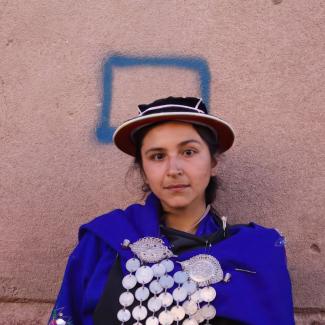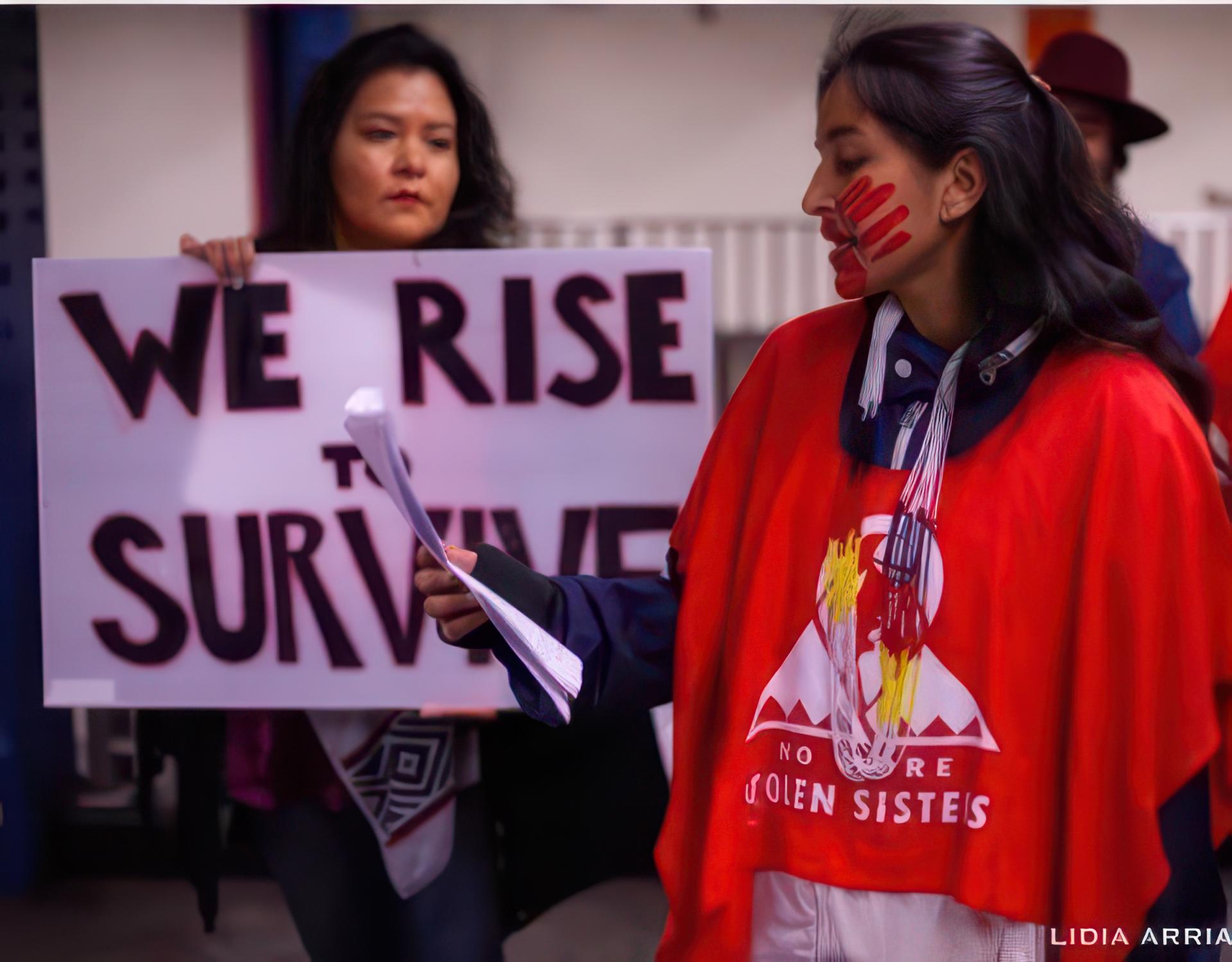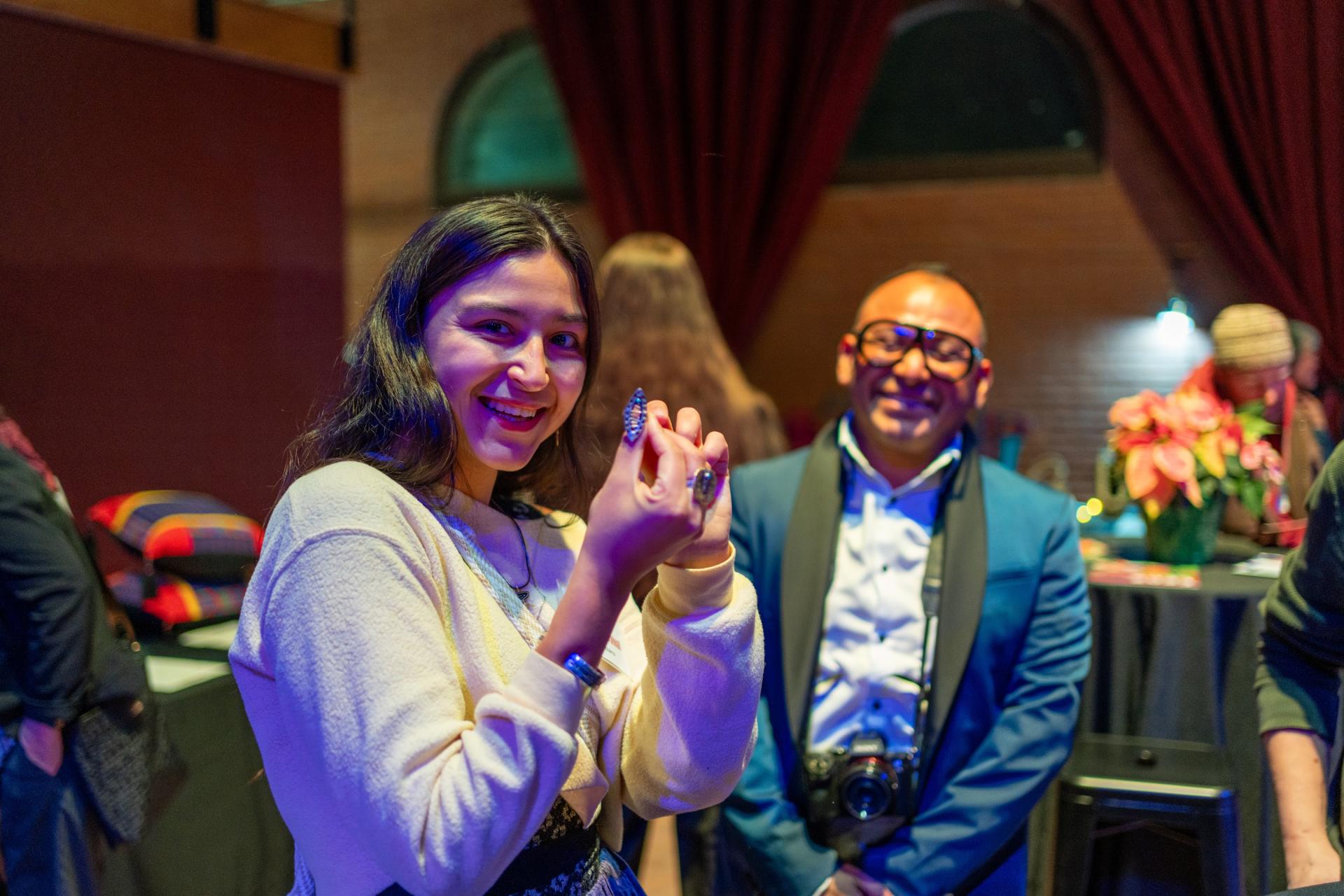
Identity
Imaynalla kusanki! (Hello! How are you?) I am Quechua from the altiplano region of Bolivia on my father’s side and European and Argentinian on my mother’s side. My ancestors came from the Andes between Potosi and the Uyuni Salt Flats. I was born and raised in New York City and Brooklyn. I also spent part of my childhood in the mountains of Argentina. There, I learned what New York City doesn’t teach you. I have also been visiting Bolivia.
Relation to the Earth
When I am in Bolivia, I feel free and at peace because of the mountains, the rivers, the sun, and the wind. They make me feel lucky to be from a place that is so sacred. During the day, you are close to the sun, and at night, you are so close to the stars. Our people connect to the Earth through our ceremonies, dances, agricultural practices, and songs. We are taught to call in our ancestors’ spirits and we believe that we are descended from the star people; that is also where we will return.
Indigenous Resilience
Being an Indigenous woman means that I am an embodiment of the past, present, and future. I think that time and space are in constant flux, and I hope to be able to move through these times and not get stuck or lost in them. Indigenous people, and specifically Indigenous women, are often at the forefront of genocides and revolutions, often as a result of colonialism.

Inspirations
My grandmothers are my inspiration. I am also very inspired by the EZLN (Zapatista Front), a movement led by Maya women from Chiapas, Mexico. Indigenous women in the Amazon region have been very inspirational to me in the way they act, think, and dream. One of my mother figures, a Mixtec woman, taught me many things in the kitchen. She also taught me how to stay rooted and strong in a patriarchal world. She showed me how important it is to never lose a mother’s love and a feminine touch.
Working at the Bazaars
I am passionate about Indigenous art and handmade products and Indigenous economic models. I come from a family of artists. At 21, I created my own jewelry line and started selling at different powwows and pop-ups on the East Coast. Now, I enjoy supporting Indigenous artisans who are still living in their communities.

Reclaiming Land and Resources
I am passionate about Indigenous sovereignty, which entails land, water, and language conservation. Indigenous Peoples should be able to self-govern, keep ancestral seeds, and remember the traditional ways of hunting. I also believe we must reclaim our human right to access clean water and restore the biodiversity at risk because of climate change, capitalism, and other consequences of colonialism.
Fighting Against New Colonization
In North and South America, I often see non-Indigenous people try to appropriate, sell, claim, or change the various kinds of traditional ceremonies that Indigenous people practice. I recently spoke to another Quechua person about this, and they reminded me that in the past, some things were kept private in our own culture, which resonated with me. One issue I have been thinking about lately is how we differentiate between what can be healing across nations and what prayerful traditions or bundles need to be more tightly preserved and kept private.
Joining Cultural Survival
I felt I needed to be a part of Cultural Survival because it knows and centers Indigenous people in all aspects of the organization. Our staff is mainly Indigenous with many Indigenous women. Working in Cultural Survival has taught me the significance of connecting with Indigenous people from all directions, showing me that we will only overcome colonialism if we work and build together.
Photos by courtesy of Maya Lazarro.
